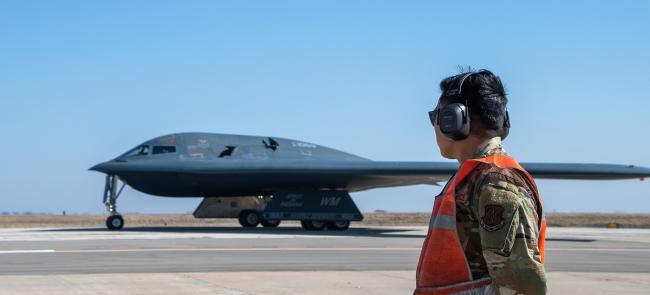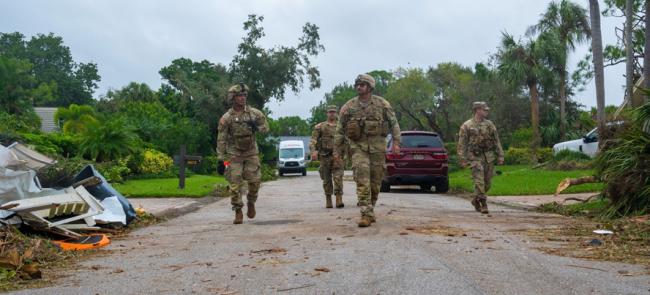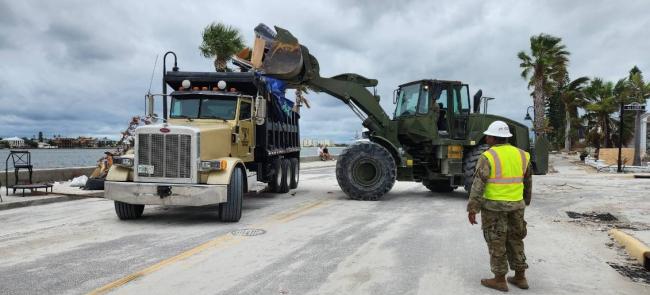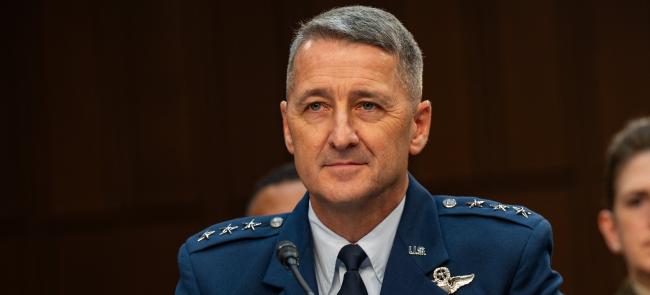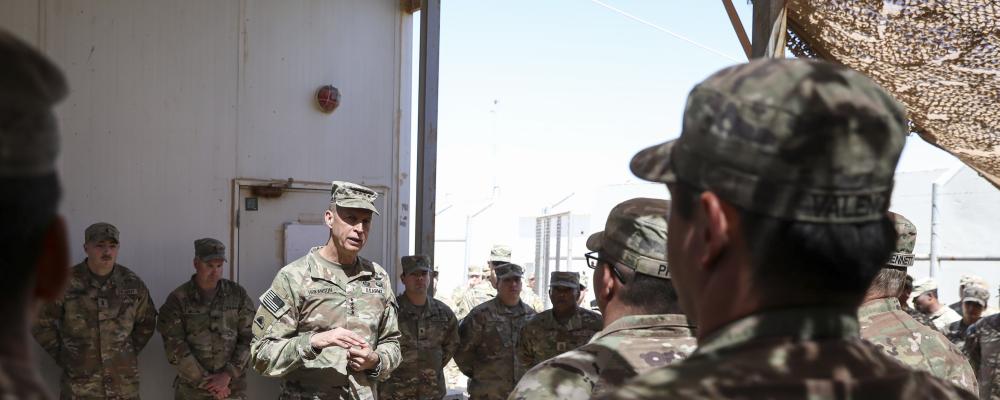
UNDISCLOSED LOCATION — "When the drone hit, it didn’t matter component, task force, branch, civilian or service member: We were Americans and allies, the people of Tower 22," one officer would write in her journal after the attack.
In the early hours of Jan. 28, a one-way uncrewed aerial system descended on Tower 22, carrying a munition of malicious intent toward the remote desert outpost where the borders of Jordan, Iraq and Syria meet.
When it struck, three service members were killed, many more were injured and personnel of all ranks, backgrounds and job specialties were thrust into action.
Army Gen. Daniel R. Hokanson, the chief of the National Guard Bureau, praised the personnel of Tower 22 while he visited Guardsmen deployed across the Middle East last week. The Guardsmen Hokanson encountered included many who were at Tower 22 in January.
"They had done everything they could to prepare themselves," said Hokanson, a member of the Joint Chiefs of Staff. "And so, when that horrible time did come, they defaulted to their training. What they did in response after the attack to mitigate the damage and the injuries was extremely powerful. As a result, many lives were saved."
Hokanson, the Guard's most senior officer, visited the Middle East with Senior Enlisted Advisor Tony Whitehead.
National Guardsmen are stationed at Tower 22 to support U.S., coalition and partner-nation efforts to maintain stability in a region percolating with renewed volatility.
Thousands of Guardsmen are deployed across the Middle East, contributing to a larger U.S. Central Command posture to ensure the defeat of ISIS as part of Operation Inherent Resolve and to build partner capacity to promote regional self-reliance and increase security as part of Operation Spartan Shield.
But the recent attack on Tower 22 is now seared into the collective memory of those who were there.
An Army captain with the California Guard heard a strange noise from inside his living quarters.
"I was woken up with what sounded like a low rumble," he said, "very low and very distinctive. My whole room started vibrating and I thought, 'That’s not normal.' A split second later — impact."
He was the deputy base commander at the time of the attack and described Tower 22 — simply "Tower" to soldiers — as a dynamic base with a busy operational tempo, mainly used as a logistics and support hub.
Since October, U.S. service members and U.S. and coalition facilities have been attacked almost 200 times in Iraq and Syria. The attack on Tower 22 is the first to kill U.S. service members and is also the first attack in the Hashemite Kingdom of Jordan.
An Army major serving as the battalion surgeon with the Arizona Guard was at Tower 22 on her first deployment when the attack happened. Back home, she is an emergency room physician. She felt inspired by her husband’s service and decided to serve, too, commissioning in 2021. Once she arrived at Tower 22, she drew on her experience to begin mass casualty response training drills.
"We ran one exercise several days before the attack," she said. "That scenario was at night. It intentionally had minimal medical staffing, which proved invaluable. Every iteration refined our processes and was useful."
An Army specialist serving as a radar maintainer and operator with the Kentucky Guard said the scene was chaotic at first. He was sleeping in his quarters, about 15 meters from the impact site when he was stirred by his roommate yelling his name. The two ran into the nearest bunker, shouting, "Take cover!" to nearby comrades.
Hokanson presented the Purple Heart to the specialist and a unit supply specialist for wounds they sustained in the attack.
He also pinned the Combat Action Badge on two soldiers and the Combat Medic Badge on the major and her team of medics for their valiant actions on Jan. 28.
The major and her team weren’t the only heroes of Tower 22.
Air Force pararescuemen with an Air Guard rescue squadron were instrumental in coordinating the evacuation of severely injured troops to a higher echelon of care, which the captain said occurred within minutes. The battalion chaplain was one of the first soldiers who rushed to the impact zone. He helped carry and load the remains of those killed on a litter for onward movement.
Hokanson lauded the efforts of Army engineers to quickly harden and protect the base. He told every Guardsman he spoke with how proud he was of them.
"When you go to an outpost like that, this is why people join the military," he said. "You are serving our nation on the farthest frontiers. You’re out in some of the most complex and dangerous areas that we have. You are doing what you were trained to do and you’re doing incredible work."
The three Army Reserve soldiers killed in the attack were Sgt. William Jerome Rivers of Carrollton, Georgia, Spc. Kennedy Ladon Sanders of Waycross, Georgia, and Spc. Breonna Alexsondria Moffett of Savannah, Georgia. All three were assigned to the 718th Engineer Company, 926th Engineer Battalion, 926th Engineer Brigade at Fort Moore, Georgia.
Note: the names of the service members interviewed for this story are withheld for operational security.
— By Sgt. 1st Class Zach Sheely, National Guard Bureau

